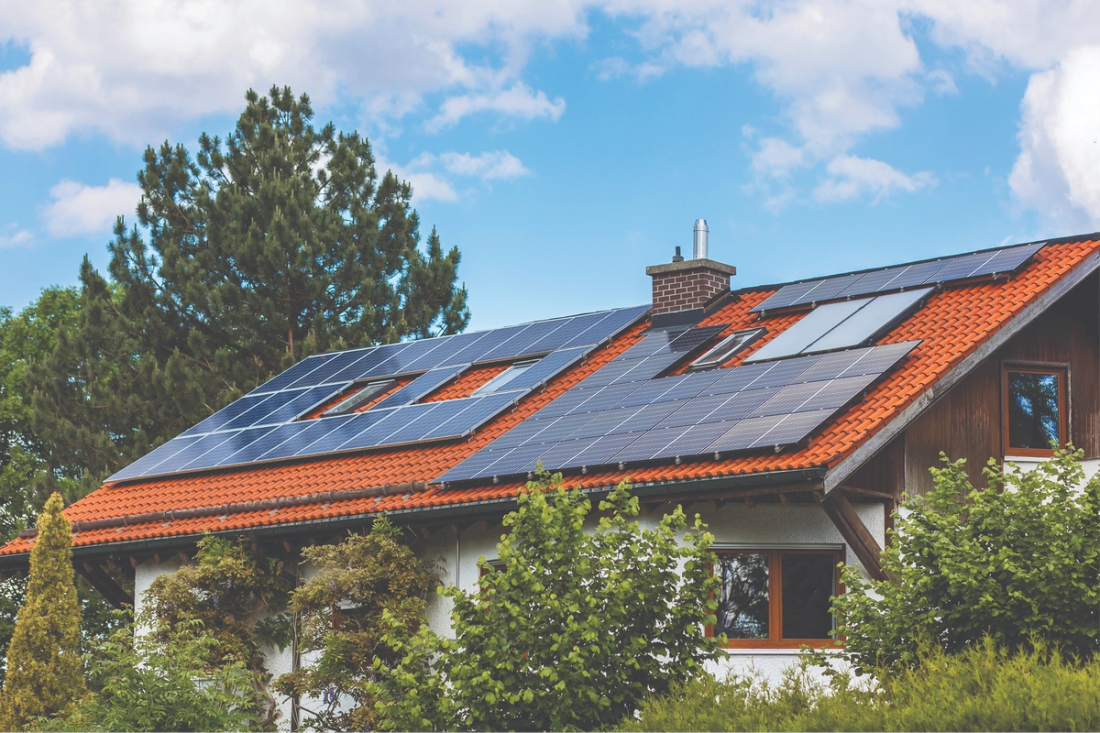Introduction
In the evolving landscape of UK buildings and energy systems, maintenance has moved from being a cost line to a strategic enabler of performance, safety and sustainability. The SFG20 Standard is the UK’s industry-standard maintenance specification for building services, created and maintained by the Building Engineering Services Association (BESA).
For professionals working in renewable-energy technologies — whether installers, engineers, homeowners or project-managers — understanding how SFG20 integrates with systems like solar PV arrays, heat pumps, energy storage and EV chargers is critical. It ensures safety, compliance and optimum performance of the energy assets. This article explores what SFG20 is, its relevance to renewable-energy projects, common challenges in adoption and practical solutions for implementation.
Context – What is SFG20 and why it matters
The SFG20 Standard began in 1990 and has evolved into a comprehensive library of maintenance schedules covering more than 70 asset types and thousands of tasks. It translates legislation, best-practice guidance and manufacturer requirements into structured, actionable maintenance work.
The standard is accessed through digital platforms and integrates with CAFM (Computer-Aided Facilities Management), CMMS (Computerised Maintenance Management Systems) or IWMS (Integrated Workplace Management Systems).
For renewable-energy professionals, the context is clear: as buildings become smarter and host multiple energy systems (solar PV, heat-pump, battery storage, EV charge points), the risk profile, asset count and regulatory complexity increase. Using SFG20 means you have a trusted “single source of truth” for maintenance planning — helping to ensure compliance under UK regulations, reduce unplanned breakdowns, optimise asset life and integrate renewables within the building lifecycle.
Common Challenges in Renewable Energy Projects & Maintenance
When integrating renewable-energy systems in buildings, several maintenance and compliance challenges arise — and many of these map directly to the kind of risks SFG20 is designed to mitigate.
1. Multiple asset types & diversified schedules
A building might host solar PV inverters, batteries, heat-pump units, EV charging hardware, plus associated electrical and building services. Each asset typically has its manufacturer’s maintenance requirements, plus statutory obligations (e.g., electrical safety, refrigerant systems, building safety). Without a standardised schedule, tasks can be missed, duplicated or incompatible.
2. Reactive vs preventative maintenance
Especially in renewable-energy contexts, a failed inverter or battery module often triggers costly downtime, energy losses or warranty invalidation. Many organisations still rely on reactive maintenance. The switch to planned preventative maintenance (PPM) is a core benefit of SFG20.
3. Compliance & auditability
With UK regulation (for example under the Building Safety Act 2022 and other building-and-services regulations) the need to demonstrate that maintenance has been planned, executed and recorded becomes more important. Renewable-energy systems bring added complexity. SFG20 supports audit trails and aligns with digital “golden thread” concepts.
4. Integration with digital systems
Energy-systems operators increasingly use IoT, monitoring platforms and asset-management systems. The challenge is mapping the physical systems into service tasks, linking with CMMS and ensuring that maintenance doesn’t become a paperwork burden. SFG20’s API and digital-platform orientation support integration.
5. Sustainability & energy-efficiency metrics
For homeowners, installers and project-managers aiming for emission reductions, the performance of PV arrays, heat pumps and storage matters. Poor maintenance can degrade efficiency, shorten lifespans and increase waste. Standardised tasks help protect performance and sustainability outcomes.
Practical Solutions: How to Apply SFG20 to Renewable Energy Assets
This section offers actionable guidance for applying the SFG20 standard in the renewable-energy context—from homeowner to large-scale estate.
Step 1 – Asset mapping and classification
Create a full asset register of all renewable-energy-related plant: PV inverters, modules, battery systems, heat-pump units, EV charge points, associated wiring, controls and building services interfaces. Map each asset to SFG20 schedules by asset type. The standard covers broad asset-types and allows customisation.
Step 2 – Selecting the correct schedule and criticality rating
Within SFG20 you’ll select maintenance schedules aligned with the asset. Tasks are colour-coded by criticality:
- Red: statutory / legal tasks.
- Pink: mandatory / business-critical
- Amber: optimal / industry best practice
- Green: discretionary
For example, your PV inverter’s electrical safety inspection may be Red; cleaning of PV modules may be Amber or Green depending on performance risk.
Step 3 – Tailoring schedules for renewable-energy systems
While SFG20 provides generic schedules, renewable assets may require tailored intervals. For example:
AssetTypical SFG20 Base IntervalRenewable-specific adjustmentJustificationPV inverter12 months electrical check6-monthly performance checkRapid technology change + warranty conditionsHeat pump12 months mechanical/electricalQuarterly refrigerant leak checkEfficiency performance riskBattery system6 monthly system health reviewMonthly monitoring of charge/discharge analyticsPrevent degradation and safety risk
Tailoring helps maximize asset life, efficiency and sustainability.
Step 4 – Integration with maintenance software and monitoring
Use CMMS/CAFM platforms and ensure they integrate SFG20 schedule content — via API or import — so tasks, dates, responsible persons, status and audit logs all feed into one system. The platform of a company like Reonic for renewable-energy professionals can be linked to SFG20-derived schedules so that installers, engineers and project-managers track tasks, performance and compliance. Digital integration reduces manual data entry, ensures audit-readiness and improves response to performance alerts (e.g., from PV monitoring or battery diagnostics).
Step 5 – Monitoring performance and feedback loop
For renewable energy, maintenance isn’t just about uptime — it’s about performance metrics (yield, efficiency, degradation, energy savings). Build a feedback loop: link maintenance tasks (e.g., inverter service) with monitoring data (e.g., inverter performance drop). If yield falls beyond a threshold, trigger corrective maintenance outside the normal interval. This approach ensures assets deliver long-term value, not just avoid failure.
Step 6 – Review and continuous improvement
SFG20 content is updated regularly by BESA’s technical authors to reflect legislation, best practice and changes in technology.Make sure your schedules are kept current — especially for renewable systems where technology and regulation evolve quickly. Audit your maintenance regime annually: identify tasks that are too frequent (wasted cost) or too infrequent (performance risk) and adjust schedules accordingly.
Case Studies and Examples
Example 1 – Commercial Estate with Solar PV and Battery Storage
A commercial building estate in the UK installed a 500 kW solar PV system plus a 1 MWh lithium-ion battery. The facilities management team used the SFG20 standard to define maintenance schedules for all new assets and integrated them into their CAFM platform. By using Red and Amber tasks correctly, they ensured statutory electrical inspections were done on time and module cleaning intervals were optimised based on monitoring data. As a result they avoided a 5-figure unexpected inverter failure and improved annual yield by 3 %.
Example 2 – Social Housing Heat Pump Programme
A social-housing provider installed air-source heat pumps at scale across 200 homes. They mapped each heat-pump unit to SFG20 schedules and built a quarterly refrigerant-check task (besides standard annual service). The provider used a digital platform (such as Reonic) to track individual unit performance and maintenance status. Over two years they saw a 7% improvement in average heat-pump efficiency and reduced reactive call-outs by 15%.
Example 3 – Homeowner with Solar + EV Charger
A homeowner in the UK fitted a 10 kW solar PV array, 11 kW EV charger and a small-scale battery. Even though they didn’t have a large asset-management team, they adopted SFG20-inspired checklist practices: annual electrical check (Red), module visual inspection (Amber), charger firmware update (Green). By following this structured approach they noticed fewer performance dips and prolonging the system’s warranty lifecycle.
Conclusion
For professionals in the renewable-energy sector — from homeowners, installers and engineers to project-managers overseeing large estates — adhering to a high-quality maintenance standard is no longer optional. The SFG20 Standard provides a robust, UK-recognised framework for planned preventative maintenance of building services and by extension renewable-energy assets. It helps you meet statutory requirements, integrate with digital tools like Reonic, optimise system performance and extend asset lifespans. By mapping your renewable-energy systems into SFG20 schedules, tailoring them for your specific technology, integrating with digital workflows and linking performance metrics, you ensure that your systems don’t just run — but run efficiently, safely and sustainably.
FAQ
Q1: What is the SFG20 Standard and who developed it?
The SFG20 Standard is a library of maintenance-specification schedules for building services in the UK, developed by the BESA. sfg20.co.uk It provides step-by-step tasks, frequencies and required skills for over 70 types of assets.
Q2: Why should renewable-energy installers or homeowners care about SFG20?
Because renewable-energy assets (solar PV, heat pumps, battery systems, EV chargers) are increasingly integrated into building services, adopting SFG20 ensures maintenance is planned, compliant, performance-focused and aligned with building-services protocols.
Q3: Does SFG20 only cover statutory tasks or also best-practice maintenance?
SFG20 covers both statutory/legal tasks (Red) and best-practice or discretionary tasks (Amber/Green).This helps organisations prioritise what must be done and what improves performance.
Q4: How can SFG20 integrate with digital platforms or CMMS systems?
SFG20 content is available via cloud-based platforms and has API/integration options to link with CAFM/CMMS/IWMS systems. When integrated, maintenance tasks, audits and asset-records can be aligned seamlessly with building-management workflows.
Q5: What are the benefits of applying SFG20 to renewable-energy assets?
Benefits include improved compliance, reduced unplanned failures, extended asset life, improved efficiency and monitoring, tighter integration into building-services management and reduced total cost of operations.
Q6: How frequently is SFG20 updated and what does that mean for renewable-energy systems?
SFG20 is regularly updated by BESA’s technical authors to reflect legislation, industry best practice and equipment changes. sfg20.co.uk For renewable-energy systems, this means your maintenance schedules can remain current with evolving technologies and regulatory environments.
Q7: Can SFG20 help with performance monitoring of renewable-energy systems like solar PV or batteries?
While SFG20 is primarily a maintenance-specification tool rather than a monitoring platform, linking SFG20-based maintenance tasks with monitoring data (yield drop, battery health, inverter alerts) creates a performance-maintenance loop. Platforms that serve renewable-energy professionals (such as Reonic) can facilitate this.
Q8: Is SFG20 mandatory for renewable-energy installations in the UK?
SFG20 itself is not legally mandated for every renewable-energy installation, but it is widely accepted as the industry standard for building services maintenance. Using it demonstrates due diligence and supports compliance with statutory obligations (electrical safety, building-services regulations, etc.).







